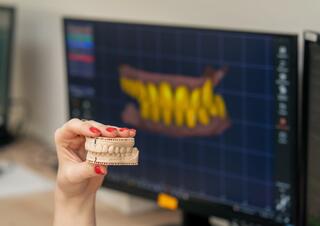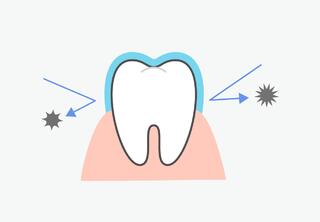Looking for a way to achieve the perfect smile? Tired of unpredictable results from traditional treatments? With Digital Smile Design (DSD), things are different! This method not only allows you to see your future smile but also lets you participate in creating it. Discover how DSD technology ensures your desired results with complete confidence. More details inside!
What is Digital Smile Design?
Digital Smile Design (DSD) is a highly accurate method of 3D computer modeling for dental work. Using images of your jaw, the dentist recreates the ideal smile with veneers or crowns, depending on the condition of your teeth. Digital Smile Design (DSD) technology lets you see the results of the treatment before the dentist even begins.
The software used to design your smile based on your preferences also allows for the development of an optimal treatment plan, covering all necessary procedures to achieve the best outcome. This makes the placement of veneers entirely predictable.
Digital Smile Design (DSD) technology involves close collaboration between the patient, dentist, and dental technician during treatment planning. This ensures a result that fully meets the patient’s expectations.
Advantages of Digital Smile Design
Digital Smile Design (DSD) simplifies the dentist's work while offering several benefits to the patient:
- Visualization of the results: With digital modeling, the dentist can show you what your new teeth will look like after veneers are placed.
- Active participation in treatment planning: You are involved in the process alongside the dentist, tracking the design of your new teeth and offering suggestions. This ensures all your requirements for the veneers are considered.
- Predictable outcomes: Digital dentistry creates veneers exactly as agreed upon during the planning and fitting stages.
- Fast modeling: At your first consultation, the dentist can show you a 3D model of your future smile, and within 2-3 days, you can try it on.
- Compatibility with CAD/CAM systems: The digital model of the veneers can be exported to any CAD/CAM system, ensuring precision in creating the micro-prosthetics.
- Versatility: With Digital Smile Design(DSD), the dentist tailors the design to meet your unique needs. No matter the complexity of your case or the condition of your teeth, the result will be flawless.
- Effectiveness: Digital Smile Design (DSD) not only addresses aesthetic concerns but also resolves functional dental issues. This method can correct abnormal bites and reduce excessive tooth wear.
Steps in the Digital Smile Design Process
Like other dental procedures, digital smile design begins with oral sanitation. Before Digital Smile Design(DSD) and veneer placement, it’s important to clean the teeth, remove plaque and tartar, treat cavities, and extract teeth that can’t be saved. After this, the dentist proceeds with treatment:
-
Consultation:
The dentist discusses your expectations for your new smile, considering details such as tooth shape, shade, size, and other factors. The dentist then offers the optimal solution for your aesthetic and functional needs. -
Intraoral scanner:
The dentist scans your mouth to create real-time digital impressions. This 3D scanner helps determine the structure of your teeth and jaws, your bite, and the positioning of each tooth. (We have a separate article on intraoral scanners.) -
Photography:
A series of intraoral photos of your teeth and smile are taken from different angles. These images help assess facial structure, facial expressions, and the color/shape of your teeth. -
Smile modeling in Digital Smile Design:
The data is loaded into the Digital Smile Design (DSD) program to create a virtual model of your smile, considering your diagnostic details such as bite, tooth position, and soft tissue. You can see the changes on the screen and offer suggestions or adjustments. -
Creating a 3D template for fitting:
Based on the digital design, the dentist creates a model, and a dental lab produces a highly accurate wax-up of the veneers. You can try on these mockups to evaluate the final outcome, making any necessary adjustments. -
Fabrication and installation of veneers:
The digital design is sent to a CAD/CAM system that uses a milling machine to craft your permanent veneers. After fitting the micro-prosthetics, you and the dentist check their quality and fit. Once satisfied, the veneers are permanently bonded to your teeth using special adhesive.
Frequently Asked Questions
Can I make suggestions during the smile design process?
Yes, patients actively participate in the modeling process, offering ideas and adjustments to ensure the final result meets their expectations.
How accurate are the digital models of veneers?
Models created using Digital Smile Design (DSD) are extremely precise, thanks to advanced 3D scanning and CAD/CAM systems, ensuring the veneers fit perfectly.
How long does it take to create and install veneers?
After the first consultation and modeling, the 3D model can usually be tried on within 2-3 days. Once approved, the permanent veneers can be fabricated and installed in just a few days.
Is the Digital Smile Design method safe?
Yes, Digital Smile Design (DSD) technology is completely safe. It allows for detailed treatment planning and minimizes the risk of incorrect placement or unsuitable materials.












